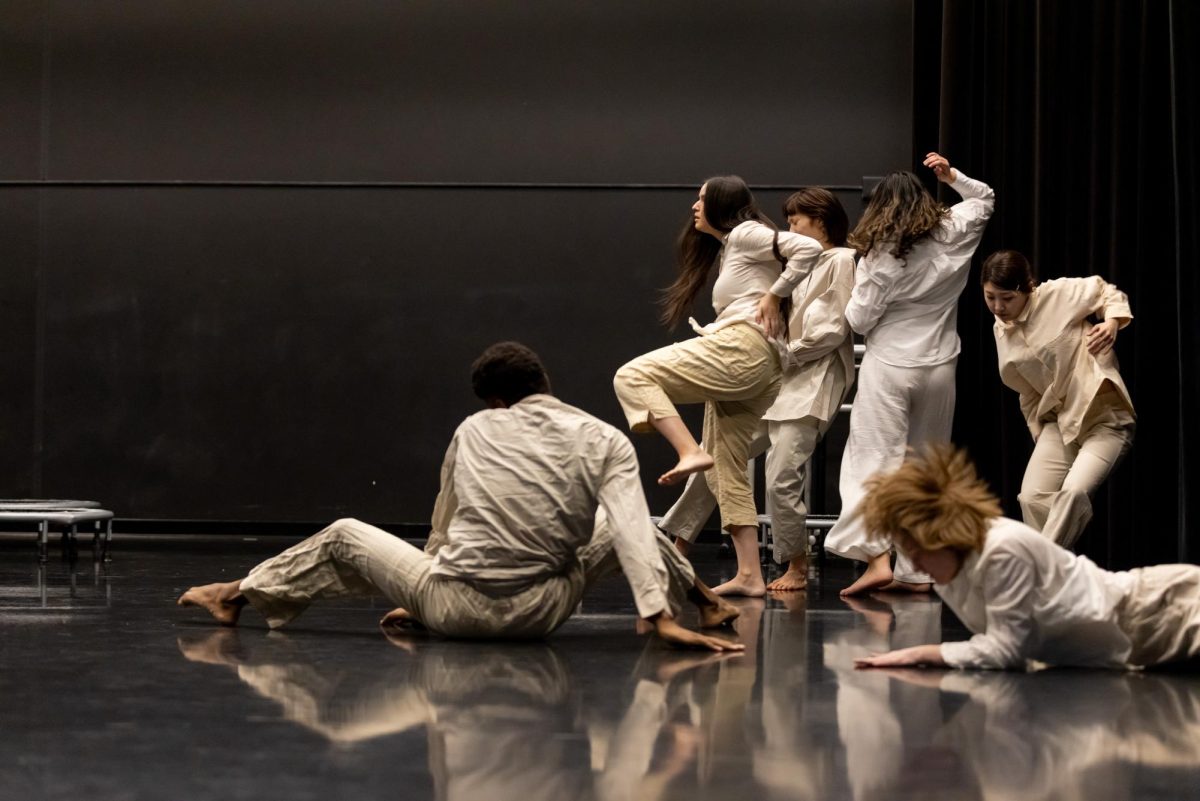It wasn’t that long ago in our species’ history that the fight with the elements was a day-to-day battle, where there was no guarantee in the morning of seeing the sun set. Now, for lack of any preternatural threat, we make our own.
“K2”
When: Thursday to Sunday, through May 20
Where: The Jungle Theater, 2951 Lyndale Ave. S., Minneapolis
Tickets: $24-36, (612) 822-7063, www.jungletheater.com
After all, once you’ve conquered nature, you’ve got to find something to keep you occupied. Why else do we run with the bulls or jump out of vehicles flying thousands of feet over the earth? Why else do we climb mountains?
But what happens when human society breaks down? What happens when our little inventions fail us, and we’re left naked in nature?
“K2,” Patrick Meyers’ 1982 play being staged now at the Jungle Theater, attempts to answer such questions. The 90-minute, two-act play tells the tale of Taylor (Kevin West) and Harold (Tim McGee), two mountain climbers who find themselves trapped near the top of the world’s second-tallest mountain, stuck 300 feet down a 600-foot crevice after an accident the night before.
It’s a demanding play all around: The actors face the challenge of carrying on the action between just the two of them, sitting stationary through most of the performance. The set designer (in this case, Joel Sass) has to create a convincing mountain abyss that will allow for climbing and repelling during the play’s few instances of movement. And the playwright has to make sure his dialogue can keep the audience engrossed through all the play’s action. But the greatest challenge by far is the one presented to the audience, who must make sense of an apparently senseless ordeal.
Taylor is something of an Average Joe. The assistant district attorney laughs his way through the disaster while trying to figure out a way to escape the mountain and, more importantly, trying to keep Harold’s mind off the broken right leg he suffered during their fall.
But Harold’s mind is not such an easy thing to control, and it is the depths of his consciousness that drive the work. He’s employed as a nuclear physicist, but only came into that job after much hard soul searching, as well as a healthy dose of peyote. He’s ceaselessly looking for some kind of meaning, but at the end of an earth-shattering century of existentialism and LSD, postmodernism and new physics, what kind of meaning is there to find? Harold is beyond faith, and, yet, desperately in need of it. He is repulsed by the rapid pace of modern society, and yet his work as an atomic physicist means he is at the forefront of scientific progress.
In order to distract himself from the pain of his present state, he spends the bulk of the play relating to Taylor how he came to find his faith by moving beyond his mind and trusting his heart. When his wife, his one and only life’s love, was forced to have a C-section during the birth of their child, Harold retreated to the chapel to pray, even as he knew the prayer would do no good. But while there, he had a mystical experience of unity, as he relates it, and found himself at one, forever and always, with his wife and unborn child. Harold has no faith in a personal God, but rather a belief that God is present in all persons.
But Taylor’s mind is unencumbered by such ivory tower problems. He works in the real world, doing the real work of putting real criminals away in prison to do real hard time. Yet to Harold, Taylor’s life is a laughable one of slavery to the modern world’s techno-industrial complex, with days spent “puttin’ away a few bloods who steal gadgets ’cause they can’t afford to buy their gadgets from the Gizmo King!” We humans have been reduced to a bunch of bees left to pollinate our technological inventions, and Harold and Taylor are slaves to that role; they can climb the highest mountain to escape, but even there they’re dependent upon oxygen masks, pick axes and ropes. There is no escape.
Nevertheless, Harold and his big brain need Taylor. While Harold sits immobile with a broken leg, Taylor’s the one who climbs up and down the cliff, trying to figure a way out. Harold and his massive intelligence are left essentially paralyzed.
The cliff itself ends up serving as the third character in the play, and Sass deserves all the credit in the world for his work. The Jungle was gutted for the set, with the three walls of the cavern stretching up and down past the picture frame of the stage for as far as the eye can see while the tiny, snow-covered plateau Harold and Taylor sit upon comes up from where the floor used to be. It’s a set that seems small and closed in, and yet infinitely big and imposing.
But what escape is there? Harold the physicist finds solace in quarks, the subatomic particles that, once they bond with each other, never cease to interact, regardless of how much space and time might separate them. No matter how isolated it is, a quark is never alone. Such a revelation might be a far cry from the divine, Word-of-God days of old, but, in a world where meaning vanishes amidst a Pandora’s box-like flood of information and the old school external problem of physical survival has been replaced by an internal, self-imposed need for spiritual subsistence, it might be the best we’ve got.














